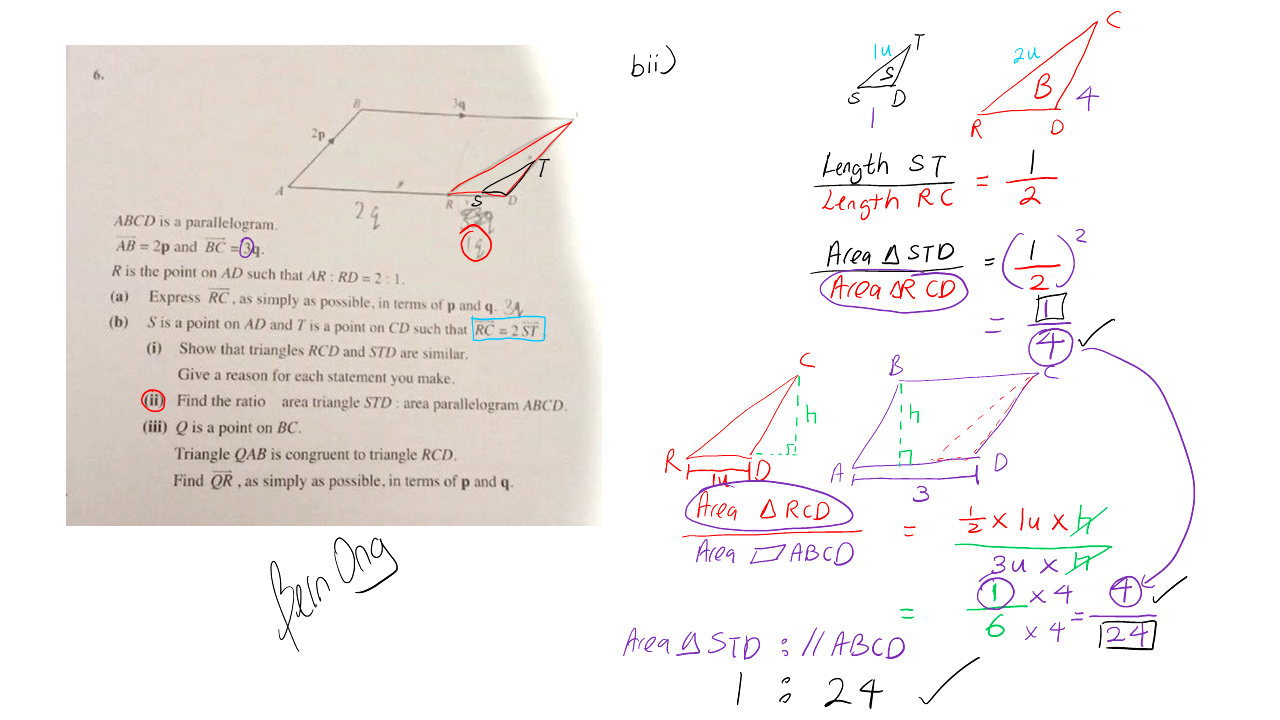Ask Singapore Homework?
Upload a photo of a Singapore homework and someone will email you the solution for free.

Question
secondary 4 | E Maths
One Answer Below
Anyone can contribute an answer, even non-tutors.
6bii
Then length RC : length ST = 1 : 2
The ratio of their corresponding lengths is 1 : 2
Ratio of their areas = 1² : 2²
= 1 : 4
Now RD : AD = 1 : 3
So AD = 3 RD
Area of the△ RCD = ½ x RD x perpendicular height of △RCD
Area of parallelogram
= AD x perpendicular height of parallelogram
= 3 RD x perpendicular height of △RCD
(They have the same perpendicular height)
= 6 x ½ RD x perpendicular height of △RCD
= 6 x area of △RCD
= 6 x 4 x area of △STD
= 24 x area of △STD
Ratio is 1 : 24
Let the area of triangle STD be 1 unit².
Since triangles RCD and STD are similar with a scaling factor of 2,
Area of triangle RCD
= Area of triangle STD x (scale factor)²
= 1 unit² x 2²
= 4 units²
Since AR : RD = 2 : 1, it follows that RD : AD = 1 : 3.
Triangles RCD and ACD have bases in the ratio 1 : 3, but they share the common perpendicular height. As such, their area ratio is 1 : 3.
Area of triangle ACD
= Area of triangle RCD x 3
= 4 units² x 3
= 12 units²
Triangle ACD is basically a parallelogram ABCD being cut into two equal halves.
Area of parallelogram ABCD
= Area of triangle ACD x 2
= 12 units² x 2
= 24 units²
= 24 x Area of triangle STD
Therefore, area of triangle STD : area of parallelogram ABCD is 1 : 24.
See 1 Answer





